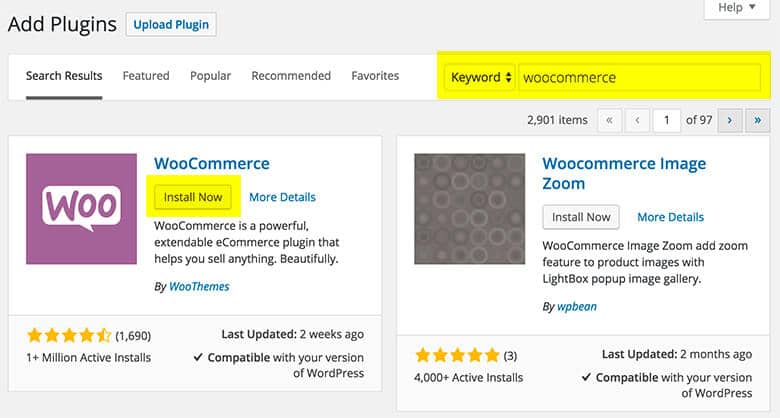You’ve started collecting emails for the launch of your online shop and now you’re ready to create your online shop on your WordPress website.
But what are the steps to setting up an online shop? In today’s post, we cover exactly how to create an online shop on a WordPress website.
How To Create An Online Shop On A WordPress Site
Step 1 | Determine your estimated online traffic
Determining how much traffic your shop will have will help you better select the correct hosting provider, so your site loads quickly and you don’t suffer from much or any downtown.
If you are getting below a thousand page views a month, you could start with using one of our basic hosting packages which starts at $14.99 per month.
If you are consistently getting over a thousand page views,the we recommend our Premier package at $34.99 per month you can find all our pricing here Website hosting
Step 2 | Determine an eCommerce plugin
What makes your eCommerce website different from a regular WordPress website is that you are selling products through your website. The following three components are what makes your eCommerce site run:
- Product landing pages
- Shopping cart
- Checkout process
So, you will need a plugin that creates product landing pages, has shopping cart functionality, and a process to accept payments for these products that people purchase.
There are several plugin options out there to help you turn your website into an eCommerce site, here are a few that we recommend:
WooCommerce
WooCommerce is by far the most popular plugin that online shop owners use. This free plugin has a great reputation and it very versatile, depending on your particular shop’s needs. While it is a free plugin, they do charge for advanced extensions that you may be interested in using.
Easy Digital Downloads
Easy Digital Downloads (EDD) is a complete eCommerce solution for WordPress users. EDD is primarily used to sell online digital products so if you are selling only digital products, EDD may be your best option.
WP eCommerce
WP eCommerce is another great option to use to sell your products online. Over 28,000 online store owners use WP eCommerce and is one of the most relied upon solutions out there. You can sell physical inventory, digital downloads, memberships, or subscriptions through WP eCommerce.
Step 3 | Install the chosen eCommerce plugin
Once you’ve settled on an eCommerce plugin, it’s time to install it from your WordPress dashboard. Search for whichever plugin you’ve chosen in the search box.

Then, you will click to install the plugin.

Step 4 | Set up product pages
Once your eCommerce plugin is installed, you will then be ready to start setting up your product pages. Each plugin will have its own set up of instructions on how to set up your product pages.
One reason to choose a popular plugin (like the ones we’ve listed above) is because thousands of people already use these plugins. This means that they most likely have very detailed instructions on how to use their plugin, making it easy for you to set up your shop quickly and efficiently.
All product pages should at least include the product name, price, image, and a brief product description.
Step 5 | Check your store settings
Most eCommerce plugins will allow you to edit the style of the buttons and borders of your products. These will initially be set to be the default color settings of the plugin. If you want them to match your branding, you may need to edit some of the CSS codings.
You will also want to double check the product image settings. Depending on the sizes of the images of your products, you may need to edit the image sizing in your store settings to make sure they show up correctly.
Another feature you will want check is that the permalink settings on your products are SEO friendly.
Step 6 | Run tests
Make sure to buy a few test products from your shop to make sure everything’s running smoothly. We recommend even having a friend test out your shop to make sure everything on the customer end runs as it should.
Having a friend to a test run might help you recognize things you wouldn’t have noticed, as you are used to using the platform.
Step 7 | Consider premium add-ons
Many free eCommerce plugins offer premium add-ons that help make the shopping experience a little bit easier for your customers. These can include offering multiple ways to pay, streamlining the checkout process, or offering multiple rates of shipping. These add-ons aren’t necessary to set up an online shop but are something to consider while setting up your online shop.
Final Thoughts
Whether you are selling physical products or digital products, WordPress is a great platform to host your online shop. With the various different plugins and extensions, your specific needs for your shop are bound to be possible.

